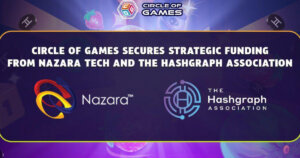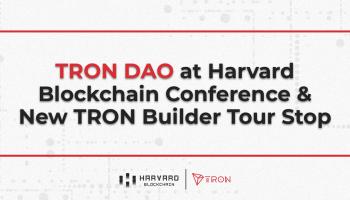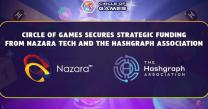 Ethereum’s Raiden Network: An Off-Chain Solution to Scalable Payments
Ethereum’s Raiden Network: An Off-Chain Solution to Scalable Payments Ethereum’s Raiden Network: An Off-Chain Solution to Scalable Payments

Cover art/illustration via CryptoSlate. Image includes combined content which may include AI-generated content.
Vitalik Buterin predicted in September 2017 that it will take a “couple of years” for the Ethereum Network to reach Visa-like capacity. Raiden (RDN) is one of the more notable efforts making progress towards this goal, using “off-chain” technologies to increase network capacity.
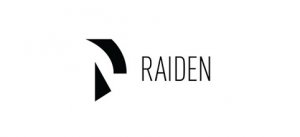
The second most valuable token on the market is quietly building all of the infrastructure needed act as a staple for the way blockchain is used. Ethereum, a BAAS (blockchain as a service) token, has hundreds of groups and projects building their foundation on the Ethereum Network using the ERC20 token standard.
Some of the largest crypto companies, such as Consensys, are investing millions into the Ethereum framework.
In a rather strategic and quiet manner, Raiden then released its first Micro Raiden Bug Bounty back on November 30th of this year.
While Raiden sounds great on paper, the ICO was never supposed to happen and there was never supposed to be a token attached to it.
Raiden promised a very quiet ICO and little marketing so that they can get the funds needed to make the project happen. This controversy seems to have contributed to a lack of demand for RDN, but investors are still betting that the off-chain tech will be a big win for Ethereum.
What is Raiden?
Raiden is very similar to the Lightning Network. It is Ethereum’s off chain layer that will provide instant transactions for a fraction of the price. How does it work? Watch this short video (1:42):
The goal of the off-chain solution is to alleviate stress from the main chain; to keep fees for Ethereum low and transactions running smoothly.
Similarly to the Lightning Network, Alice doesn’t need direct payment channel connections to pay Dave the barista — if Dave knows Cindy and Alice knows Bob, and Bob and Cindy know each other, the payment channels can communicate with each other to make the transaction happen.
It will also be ERC20 compatible. This means that every single ERC20 token, as well as Ethereum, will work with Raiden.
This creates huge benefits in Ethereum’s multi-token ecosystem because it will create many more use cases than the Lightning Network currently can. Payment channels can be created for specific tokens that require constant transactions.
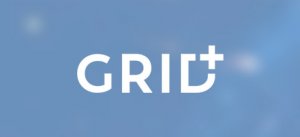
For example, Grid+ (GRID), a blockchain solution for decentralizing and distributing energy generated by customers, is an ERC20 token that has already partnered with Raiden. They will use the network to batch transactions in their system, which will alleviate Ethereum’s main chain as well as save Grid+ gas fees.
In fact, many companies have already partnered with Raiden. Enjin (ENJ), SmartMesh, and the Energy Network Foundation are a few large companies that see the advantages to incorporating Raiden transactions into their networks.
Micro Raiden – Fast p2p Payments
Micro Raiden (or µRaiden) is a system within the Raiden Network that has been built to create fast p2p micropayments. This is different from the Raiden Network in the sense that the Raiden Network will be more flexible, allowing multihop transfers for transactions to happen, while Micro Raiden creates super fast, unidirectional transfers that have zero fees (besides the gas cost of opening and closing a channel).
Micro Raiden’s eyes are on the IoT market, M2M (machine-to-machine) markets, and pay-per-use subscriptions. A demo can be tried here to get an idea of how developers imagine it operating.
Atomic Swaps and raidEX
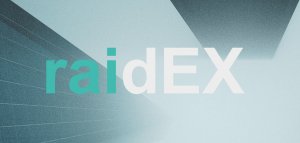
RaidEX, a decentralized exchange built on the Raiden Network, has made use of Raiden’s atomic swap feature. Raiden’s atomic swaps allow for all ERC20 tokens to be interchangeable.
Users with multiple ERC20 tokens will be able to instantly swap for other ERC20 tokens without a third party with far lower transaction costs.
ICO Controversy
Since an ICO was never originally intended, many saw it as a money grab. Raiden didn’t give much of a heads up or explanation to why they wanted to do an ICO:
So disappointed to see Raiden (i.e. Lightning on Ethereum) go for a cash grab. A token is not needed. ?
5+ LN teams on Bitcoin and no ICOs. https://t.co/A3XNoWnDGZ
— Charlie Lee [LTC] (@SatoshiLite) September 22, 2017
Vitalik also expressed his concern about the surprise ICO:
I wish they didn't but I totally understand why they did and do not blame them. Hence (ii) as my small part in providing alternatives
— Vitalik Buterin (@VitalikButerin) September 22, 2017

While the tech is sound, the intentions may not align with Ethereum. Vitalik announced along with Joseph Poon another scaling solution called Plasma, which is still very early in the works and initially being designed to work with the OmiseGo payment network.
Raiden is functioning now and offering great solutions for Ethereum’s scaling issue, but Plasma (which will not have an ICO) might become the Ethereum Foundation’s go-to solution for scaling.
That being said, Ethereum is large enough to incorporate both into its ecosystem, and Raiden has no intentions of slowing down.
Regardless of what happens, 2018 promises to be an interesting and pivotal year for blockchain scaling!
